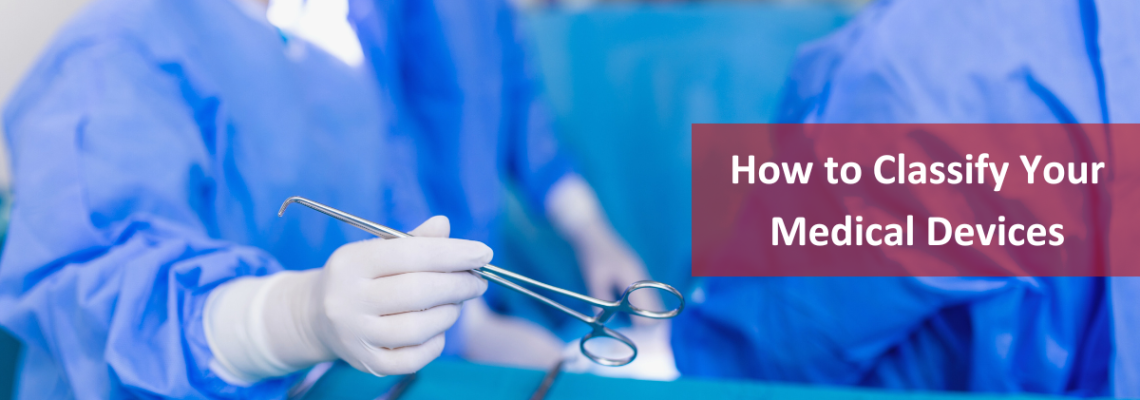Navigating the complex landscape of medical device regulations is critical for manufacturers seeking to bring their products to market. The U.S. Food and Drug Administration (FDA) classifies medical devices based on the risk they pose to users. Proper classification is crucial as it determines the regulatory requirements, timelines, and costs associated with the device’s approval. Here, we’ll guide you through the key steps to classify your medical device under the FDA system.
FDA Classification System: Understanding the Risk Levels
The FDA groups medical devices into three classes—Class I, Class II, and Class III—depending on their intended use and the potential risk to patients or users. Each class comes with its own regulatory control requirements, which increase in rigor based on the associated risk.
Class I Devices: Low Risk
Class I devices are considered to pose the least risk to patients and users. They are typically subject to general controls, which ensure safety and effectiveness through standards such as proper labeling, adherence to good manufacturing practices, and device registration. Many Class I devices do not require a premarket notification (510(k)), making them easier to bring to market.
Examples of Class I devices:
- Bandages
- Examination gloves
- Handheld surgical instruments
Key characteristics:
- Lowest risk
- General controls only
- Many are 510(k) exempt
Class II Devices: Moderate Risk
Class II devices are higher risk compared to Class I, requiring both general and special controls to ensure safety. These controls may include performance standards, post-market surveillance, and FDA guidance documents. Most Class II devices must undergo the 510(k) premarket notification process, demonstrating substantial equivalence to a legally marketed predicate device.
Examples of Class II devices:
- Powered wheelchairs
- Infusion pumps
- X-ray machines
Key characteristics:
- Moderate risk
- Subject to general and special controls
- Most require 510(k) premarket notification
Class III Devices: High Risk
Class III devices are those that sustain or support life, are implanted, or present a high risk of illness or injury. Because of the high potential risk, these devices require the most stringent regulatory control, including premarket approval (PMA). PMA involves extensive clinical trials to demonstrate safety and efficacy, making it the most demanding regulatory pathway.
Examples of Class III devices:
- Implantable pacemakers
- Breast implants
- Heart valves
Key characteristics:
- Highest risk
- Subject to premarket approval (PMA)
- Involves extensive clinical data and review
Key Factors in Device Classification
Several factors play a role in determining how a medical device is classified by the FDA. It’s essential to understand these considerations to avoid costly delays or errors in the regulatory process.
- Intended Use: What is the device designed to do? The intended use, as defined in its labeling, plays a primary role in classification.
- Indications for Use: This refers to the conditions or patient populations the device is meant to treat, diagnose, or monitor.
- Technological Characteristics: Devices that use new or unique technologies may face different classification hurdles than those using established technologies.
- Potential Risks: Any risks the device could pose to patients or users, such as adverse effects, are assessed during classification.
Step-by-Step Process for Classifying Your Medical Device
Once you understand the different classifications, the next step is determining where your product fits. Follow these steps to ensure you correctly classify your device:
1. Review the FDA Classification Regulations
Start by consulting the FDA’s database of medical device classifications. These regulations, found in the Code of Federal Regulations (CFR) under Title 21, provide a wealth of information on how different devices are classified.
2. Search the FDA Product Classification Database
Use the FDA’s Product Classification Database to find existing classifications for similar devices. This will help you determine if a predicate device already exists for your product.
3. Assess Your Device’s Risk and Intended Use
Compare your device’s features, intended use, and potential risks against similar devices. Consider whether your device introduces new technologies or significant modifications that might place it in a higher-risk category.
4. Determine if a Predicate Device Exists
For Class II devices, check if there’s a legally marketed device (predicate) that is substantially equivalent to yours. If one exists, you may be able to follow the 510(k) pathway. If no predicate exists, you might need to pursue a more rigorous PMA.
5. Consult with the FDA if Necessary
If you are uncertain about your device’s classification, the FDA offers pre-submission meetings (Q-submissions) where you can seek guidance before filing a formal submission.
How Device Classification Affects Your Regulatory Pathway
The classification of your medical device dictates the type of regulatory submissions required, clinical data needed, and the overall time to market.
- Class I Devices: Most are exempt from the 510(k) process and do not require premarket submissions. However, general controls must still be followed.
- Class II Devices: Generally require a 510(k) submission to demonstrate substantial equivalence to a predicate device.
- Class III Devices: Require PMA, which involves significant clinical trials and extensive review by the FDA, resulting in longer timelines and higher costs.
The Importance of Proper Classification
Classifying your medical device accurately is essential for ensuring smooth regulatory approval and minimizing costly delays. At Jordi Labs, an RQM+ company, we specialize in guiding manufacturers through the complex FDA classification process. With deep expertise in regulatory laboratory services, we help clients determine the correct classification for their devices and streamline the pathway to market. Our team of scientists and regulatory experts work closely with you to ensure your device meets all safety, efficacy, and compliance standards. Partner with Jordi Labs for precision, compliance, and peace of mind in your medical device classification journey.





